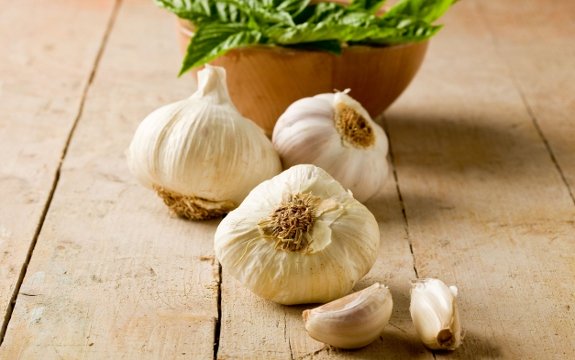Garlic Better than RX Medications at Detoxing Lead from the Body

 Lead poisoning is life threatening and comes with all sorts of health risks. The common solution in the conventional medical world, of course, is a prescription drug that goes by the name d-penicillamine, but this medication is accompanied by too many serious health risks. One recent study, however, has indicated that garlic is a far safer and just as effective option, and it’s something many of us already eat.
Lead poisoning is life threatening and comes with all sorts of health risks. The common solution in the conventional medical world, of course, is a prescription drug that goes by the name d-penicillamine, but this medication is accompanied by too many serious health risks. One recent study, however, has indicated that garlic is a far safer and just as effective option, and it’s something many of us already eat.
According to research published last year in Basic & Clinical Pharmacology & Toxicology, garlic is as effective at chelating lead from the body as d-penicillamine, and it does so without the serious side effects.
GreenMedInfo.com reports that lead poisoning accounts for 0.2% of all deaths and 0.6% of disability-adjusted life years globally. The
But the Big Pharma treatment for lead poisoning doesn’t do much better. D-penicillamine comes with side effects like anemia, diarrhea, bone marrow suppression, collagen disorders, distorted taste, as well as kidney, liver, and muscle damage. The occurrence of these side effects is estimated at 30 to 60%, not a good risk to gamble on.
The garlic study, however, showed that not only does garlic reduce lead toxicity like D-penicillamine, but it does so with no side effects (except for maybe garlic breath). Several symptoms of lead poisoning actually decreased with garlic treatment but not with D-penicillamine treatment. This paired with the lack of side effects makes it a worthwhile choice. Looks like garlic is one of many detoxifying healing foods.
The researchers concluded:
“The frequency of side effects was significantly (p=0.023) higher in d-penicillamine than in the garlic group. Thus, garlic seems safer clinically and as effective as d-penicillamine. Therefore, garlic can be recommended for the treatment of mild-to-moderate lead poisoning.”
This study simply adds to the long list of research affirming the many health benefits of garlic. The delicious bulb has immune boosting and anti-infection properties, it is anti-viral, anti-bacterial, and anti-fungal, and it tastes great in just about any savory dish.

I always wonder what kind of dosages they are using in these studies. Also is it fresh garlic, dried, extract? Love the stories, but adding this info would really help us to apply it.
The first commenter is spot on. I went and found the study: http://onlinelibrary.wiley.com/doi/10.1111/j.1742-7843.2011.00841.x/pdf . Here’s what they were taking, in the author’s words: “Garlic tablets (Garlet 400 mg; manufacturing date: 10/2007; expiry date: 10/2012; production number: 1228033537; made in Isfahan, Iran) were powdered and conserved in pink-colour size 1 capsules. According to the patient information leaflet, each garlic tablet contains 400 mg dried powder garlic that is equivalent to 1200 picograms allicin or 2 grams fresh garlic.” It’s just not that hard to include this info directly in the article, with a link to the study or abstract. Then, if you want to go “whole food” versus supplementing, simply tell people what 2 grams of garlic looks like in terms of # of cloves.
I've been juicing 4 or 5 garlic cloves a day for the last week.
How about just lots of garlic? Frequently? Like every day, so people get used to you. High chlorophyl foods, such as parsley, is reportedly helpful with the aroma which might otherwise offend some people, but no one has complained yet. I drink lots of wheat grass juice. Thank you.